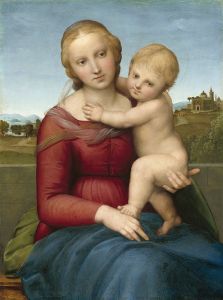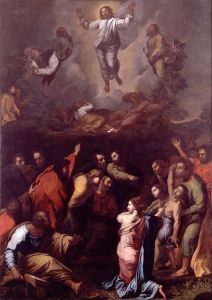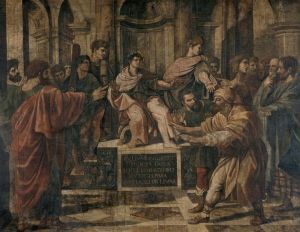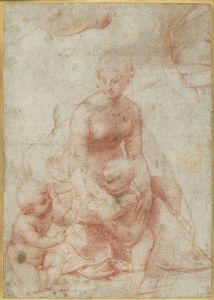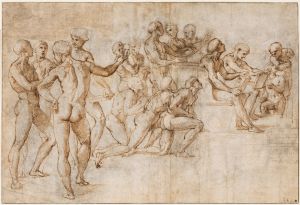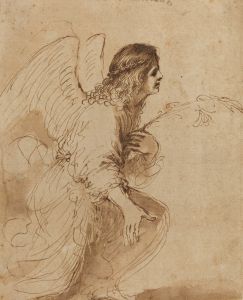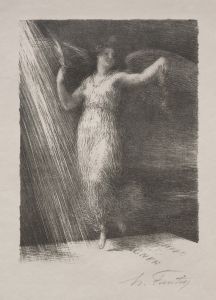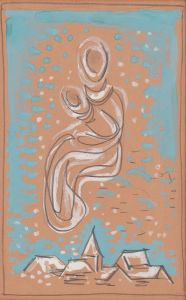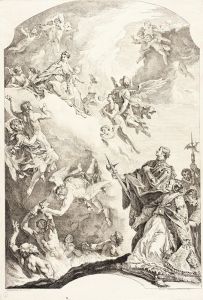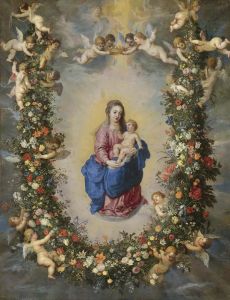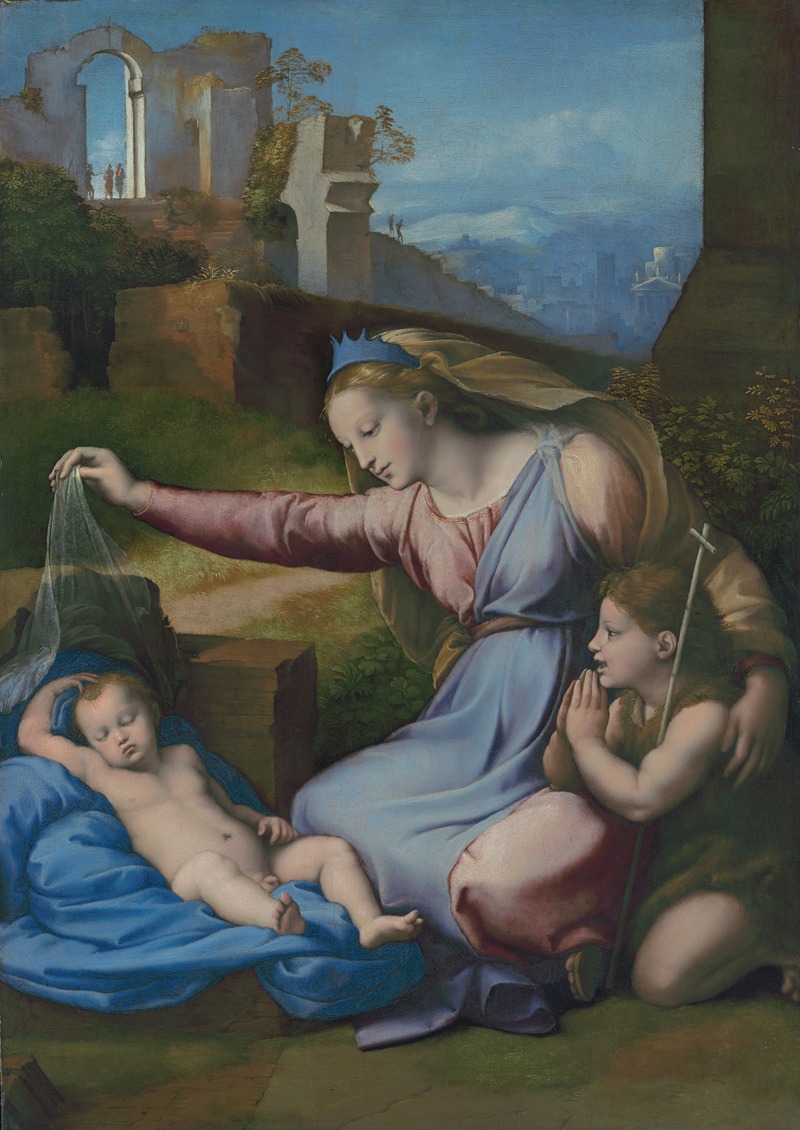
Madonna with the Blue Diadem
A hand-painted replica of Raphael’s masterpiece Madonna with the Blue Diadem, meticulously crafted by professional artists to capture the true essence of the original. Each piece is created with museum-quality canvas and rare mineral pigments, carefully painted by experienced artists with delicate brushstrokes and rich, layered colors to perfectly recreate the texture of the original artwork. Unlike machine-printed reproductions, this hand-painted version brings the painting to life, infused with the artist’s emotions and skill in every stroke. Whether for personal collection or home decoration, it instantly elevates the artistic atmosphere of any space.
"Madonna with the Blue Diadem" is a painting traditionally attributed to the Italian Renaissance artist Raphael, although its authorship has been a subject of debate among art historians. The painting is believed to have been created during the early 16th century, a period when Raphael was at the height of his artistic career. It is currently housed in the Musée du Louvre in Paris, France.
The painting depicts the Virgin Mary, also known as Madonna, with the Christ Child. The title "Madonna with the Blue Diadem" refers to the blue headband or diadem that Mary wears, which is a distinctive feature of the artwork. The composition is intimate and tender, capturing a serene moment between mother and child. The Madonna is shown holding the infant Jesus, who is depicted with a gentle and innocent expression. The use of soft colors and delicate brushwork is characteristic of Raphael's style, contributing to the overall harmony and grace of the painting.
Raphael, born Raffaello Sanzio in 1483 in Urbino, Italy, was one of the leading figures of the High Renaissance. He was renowned for his ability to convey emotion and beauty through his art, and his works often featured religious themes. Raphael's paintings are celebrated for their clarity of form, balanced composition, and visual achievement of the Neoplatonic ideal of human grandeur.
The "Madonna with the Blue Diadem" is an example of Raphael's skill in portraying the divine and human aspects of religious figures. The painting reflects the influence of his predecessors, such as Leonardo da Vinci and Michelangelo, while also showcasing his unique artistic vision. Raphael's ability to blend the sacred with the accessible made his depictions of the Madonna and Child particularly resonant with viewers of his time and continues to do so today.
The provenance of the painting is somewhat obscure, and there has been scholarly debate regarding its attribution. Some art historians suggest that the painting may have been completed by Raphael's workshop or by one of his pupils, as was common practice during the Renaissance. This collaborative approach was typical in Raphael's studio, where he often worked alongside talented assistants who contributed to his projects.
Despite these uncertainties, "Madonna with the Blue Diadem" remains an important work within the context of Renaissance art. It exemplifies the period's emphasis on religious devotion, artistic innovation, and the exploration of human emotion. The painting's presence in the Louvre allows it to be appreciated by a global audience, contributing to the enduring legacy of Raphael's artistic achievements.
In summary, "Madonna with the Blue Diadem" is a testament to Raphael's mastery of religious imagery and his influence on the art world. Its delicate portrayal of the Madonna and Child continues to captivate viewers, reflecting the timeless appeal of Raphael's work and the enduring power of Renaissance art.





